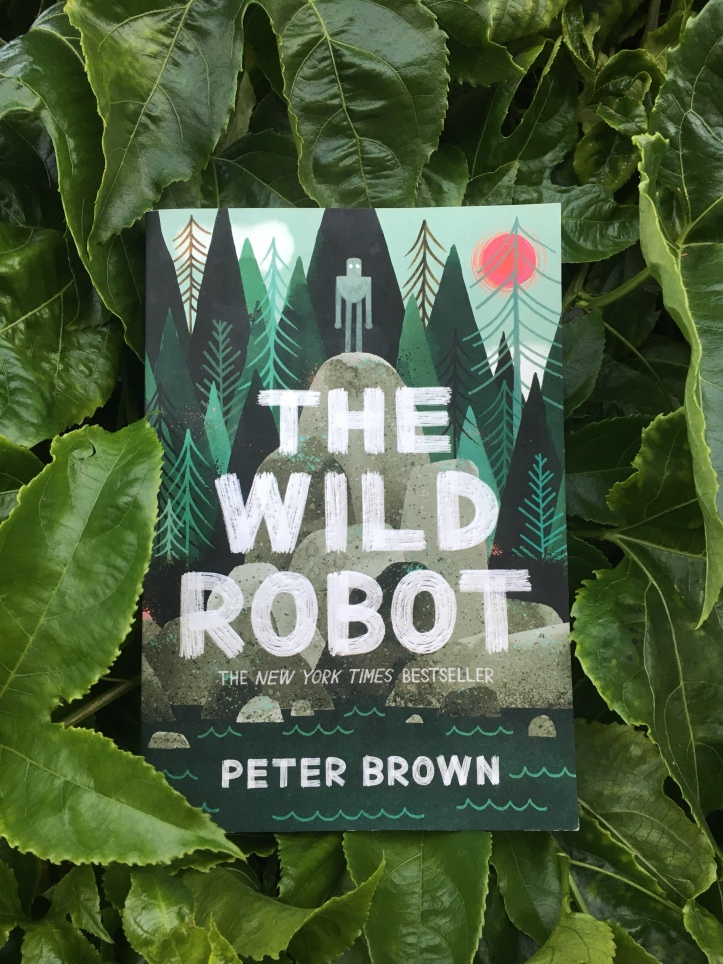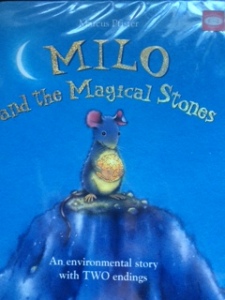Clouds scudded through the sky
Spiders spun intricate webs, Berries beckoned to hungry mouths, Foxes stalked hares, Mushrooms rose up from leaf litter, turtles plopped into ponds, moss spread across tree roots, vultures hunched over carcasses, ocean waves beat against the coastline, tadpoles became frogs, caterpillars became butterflies. A camouflaged robot observed it all.

The Wild Robot by Peter Brown is my latest read and one which has had many positive reviews. I loved the premise of this novel – a robot living on an island amongst nature, learning to live in the wild and learning about the cycles of life.
But did I love the book – after a slow hump in the middle, I did.
Author Peter Brown involves the reader right from the start, telling us all about how the robot came to be on the island and often asking us questions about what we think might happen next. We watch as Roz, the mechanical robot, learns to live in nature by observing daily activities by animals, watching the subtle changes in the cycle of seasons and day/night and of course through making friends.
We learn about the daily activities of Roz, which I found interesting but a little slow at times. However, the pace picked up again and the growth of love between Roz and her adopted son made the story so much more rich.
The Wild Robot explores the intricate details of nature and how everything effects each other. We learn, in a subtle way, about the impact changing seasons and human development are having on animals and the possibility of life with robots.
Younger children will love this book if it is read to them as they can explore how Roz learns about animals and the natural world. The last few chapters are confronting – but so are many aspects of the current world we live in.
The Wild Robot is an excellent read, broken up into little chapters with simple illustrations, it will reinvigorate your desire to get out in nature and possibly become a little wild yourself!
Children over 11 will enjoy reading this alone and I would even recommend this book as a class study as so many different topic areas are covered
- Climate change (how it effects animals habitat, survival in the changing seasons)
- How living things work with each other (life and death, building materials, symbiotic relationships)
- Animal habitats (how they create them and where they live)
- Robots in our lives – do we really need them? (What do we use them for now?)
- Migration patterns in birds (Map patterns of your local migratory birds)
- Geography (uninhabited island in the world)
- Literary technique – breaking the fourth wall.
- How do we communicate with animals?


